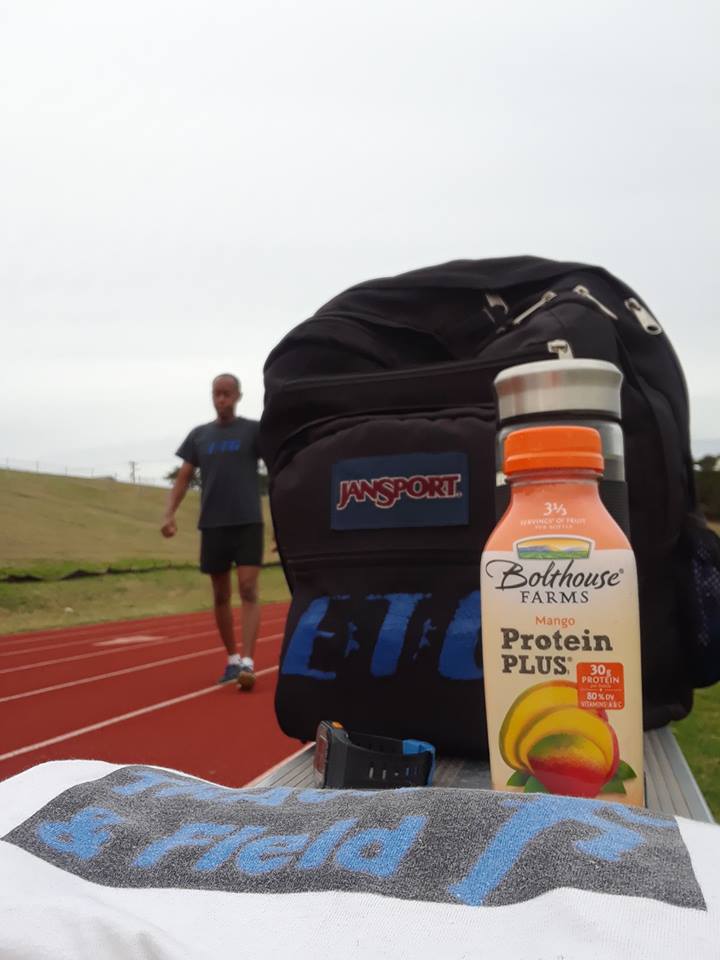Post-workout nutrient consumption…..
Within 5 – 10 minutes post-workout while still at the track I begin consumption of a protein-carbo beverage.
It also contains micronutrients.
Provides the critical range of carbos 20 – 40 grams allowing one to strike while your blood flow is still relatively high and thus a greater rate of delivery of carbos to brain, nervous system, immune system, and muscle during the first 20 – 30 minutes. That results in greater carbo available for fuel for post-workout cell function, greater carbo available for fuel for local immune system cells doing their required jobs that enhance workout recovery and forward movement of cellular fitness level, and greater carbo available for storage as glycogen to be used for fuel in the next race or the next workout.
—– Post-workout beverage provides…..whey protein and micronutrients
whey protein……
— includes cysteine…….which increases glutathione
— gluthatione increased more with whey protein
— better increase in insulin compared to caseinate
— better muscle protein synthesis in whey compared to caseinate
— higher blood levels of essential amino acids in whey compared to caseinate
— higher blood levels of leucine in whey compared to caseinate
— The two main whey proteins……a-lactalbumin and ß-lactoglobulin
— enhances neutrophil function, increases lymphocytes
– alpha-lactalbumin…..contains tripeptide [Glycine-Leucine-Phenylalanine]
— enhances macrophage function
– alpha-lactalbumin…..high tryptophan content has neurological impact
.
.
“These data indicate that liquid carbohydrate plus essential amino acid ingestion ingestion enhances muscle anabolism following resistance training to a greater extent than either CHO or EAA consumed independently. The synergistic effect of liquid carbohydrate plus essential amino acid ingestion maximises the anabolic response……”
.
S.P. Bird, K.M. Tarpenning, F.E. Marino
Independent and combined effects of liquid carbohydrate/essential amino acid ingestion on hormonal and muscular adaptations following resistance training in untrained men
European Journal of Applied Physiology…..Volume 97 #2……May 2006….page 225 – 238

